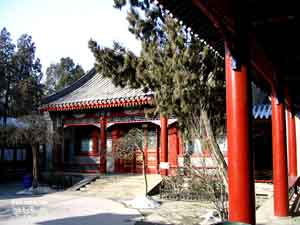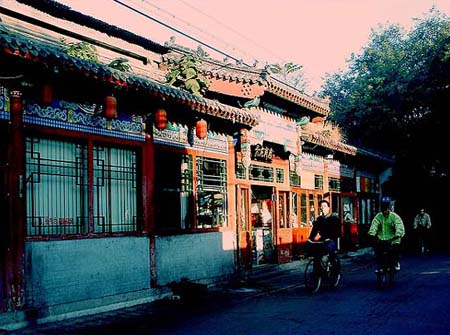| |
A siheyuan (Chinese: ËĺÏÔº; pinyin: s¨¬h¨¦yu¨¤n) is a historical type of residence that was commonly found throughout China, most famously in Beijing. The name literally means a courtyard surrounded by four buildings. In English, siheyuan are sometimes referred to as Chinese quadrangles. Throughout Chinese history, the siheyuan composition was the basic pattern used for residences, palaces, temples, monasteries, family, businesses and government offices. In ancient times, a spacious siheyuan would be occupied by a single, usually large and extended family, signifying wealth and prosperity. Today, however, most remaining siheyuan are used as mass housing complexes, and suffer from a lack of modern amenities.
Foreign visitors often think siheyuan is bungalow, actually it is not bungalow. It is traditional graceful chinese building. A standard Siheyuan usually consists of houses on its four sides, and the house which stands at the north end and faces athe south is called the main house or north house. The ones on both sides are called side houses, and the one shich stands at the south end and faces north is called oopposite house or south house.
The Siheyuan ??s gate is usually at the southeastern corner according to the traditional concepts of the five elements that were believed to compose the universe, and the eight diagrams of divination. Normally there is a screen-wall inside the gate so that outsiders cannot see directly into the courtyard and it is also believed to protect the house from evil spirits. Outside the gate of some large siheyuan, there is a pair of stone lions on each side. Such a residence offers space, comfort and quiet privacy. It is also good for security as well as protection against dust and storms.
The gates are usually painted vermilion and have large copper door rings. Usually a whole family lives in one compound. The elder generation lives in the main house, the younger generation live in the side houses, and the south house is usually their sitting room or study.
History
Fully developed siheyuan date back as early as the Western Zhou period (1122 BC to 256 BC), exhibiting the most outstanding and fundamental characteristics of Chinese architecture. They exist all across China and are the template for most Chinese architectural styles.
Modern Beijing's population boom has made housing one of city's biggest challenges. Siheyuan today are typically used as housing complexes, hosting multiple families, with courtyards being developed to provide extra living space. The living conditions in many siheyuan are considered squalid, with very few having private toilets. In the 1990s, systematic demolition of old urban buildings took place in Beijing under rapid economic development. Siheyuan are being torn down to address the problem of overcrowding, and have been replaced by modern apartment blocks.
|






